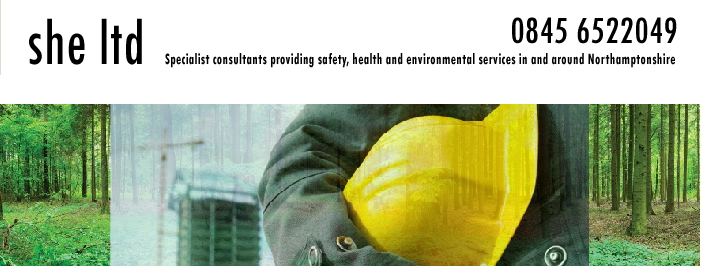This month’s topics are about managing Construction Work at Height, and Construction Waste Management.
Work at Height
Managing work at height follows a hierarchy of controls – avoid, prevent, arrest – which begins with the question – can the work be done safely from the ground? Fall restraints and safety netting should only be considered as a last resort if other safety equipment cannot be used.
Assessing Work at Height:
The law requires that employers and self-employed contractors assess the risk from work at height and go on to organise and plan the work so it is carried out safely.
Try avoiding work at height, if you can. You must otherwise prevent or arrest a fall and injury if work at height is necessary.
Instruct and train your workforce in the precautions needed. Method statements are widely used in the construction industry to help manage the work and communicate what is required to all those involved.
Key issues for all work at height are:
- Risk assessment
- Precautions required
- Method statements
The HSE website has a list of scenarios that can be applied to several different situations. These include ladders, fragile surfaces, scaffolding, and roof work.
Construction Waste Management
We want to encourage the remediation of brownfield land and the use of Cluster Projects, and reduce the amount of material that is sent for disposal. Equally we have to ensure the necessary measures are in place to ensure the environment and health is protected.
With our position statement we are setting out how we will regard, as a regulator, the CL:AIRE Code of Practice (CoP). Essentially our position means that operators working to the CoP can, under certain circumstances, make the decision that materials arising on site need not be considered waste.
These circumstances include reusing materials on the same site and transferring clean naturally occurring materials for direct use (without the need for treatment) at another site. Also it means that, when the CoP is followed, waste treated at an authorised hub site within a Cluster Project can cease to be waste.
There are limitations and the CoP and our Position must be read carefully before making any operational decision. However, we believe these measures should help speed up decision-making by the sector whilst retaining an appropriate level of protection to the environment and health.
It is our intention to audit this approach to ensure it is working. Our position does not cover brownfield materials leaving a site for direct use elsewhere. Such materials are easier to lose track of and we believe there is greater scope for abuse and a higher risk to the environment or health.
Find out how new regulations affect construction projects
New regulations came into force in April 2008 which means that any construction project in England costing over £300k needs a Site Waste Management Plan (SWMP). This includes:
- new build
- maintenance
- alteration or installation/removal of services such as sewerage, water.
A SWMP sets out how building materials, and resulting waste, is to be managed during the project.
The SWMP's purpose is to ensure that:
- building materials are managed efficiently
- waste is disposed of legally, and
- material recycling, reuse and recovery is maximised.
Client responsibilities
It is the clients responsibility (or principal contractor) to:
- ensure a SWMP is written, followed, and updated during the project. Although the plan must be written at the construction design stage, it is a requirement of the SWMP regulations to maintain it during the whole project
- update the plan with the site day to day activity.
Types of Site Waste Management Plans
There are two types of SWMP depending on the cost of the project:
- a project costing between £300 - £500k follows a basic template
- anything over £500k requires a much greater level of detail.
The SWMP regulations are intended to be self regulated. The onus is on the client (or principal contractor) to make sure:
- the SWMP meets its regulatory requirements
- all those involved in the project act in accordance with the plan and current waste legislation.
Both local authorities and ourselves have power to enforce these regulations via fixed penalty notices or prosecution.
The Environment Agency has section that goes into Waste Management in greater detail. Follow the link below for more detail:
http://www.environment-agency.gov.uk/business/sectors/32729.aspx
For advice on issues of Safety, Health, and Environment please visit us at:




No comments:
Post a Comment